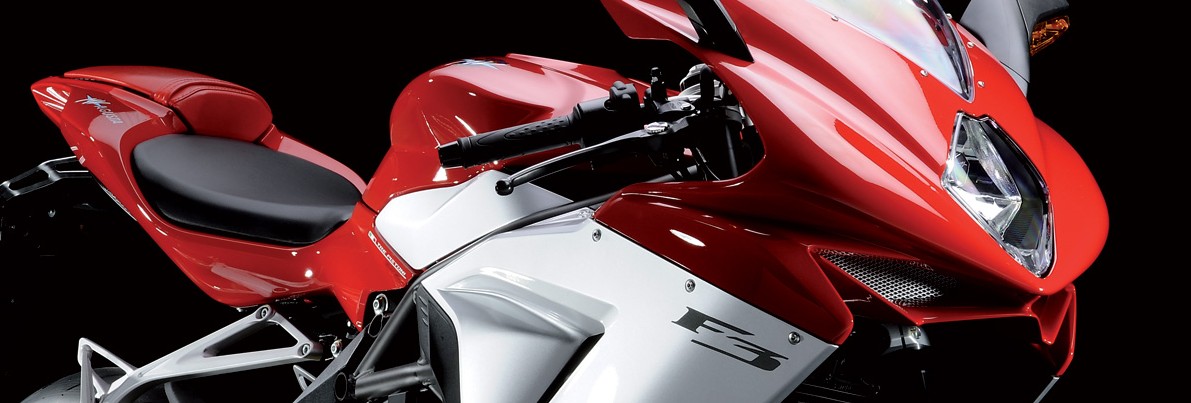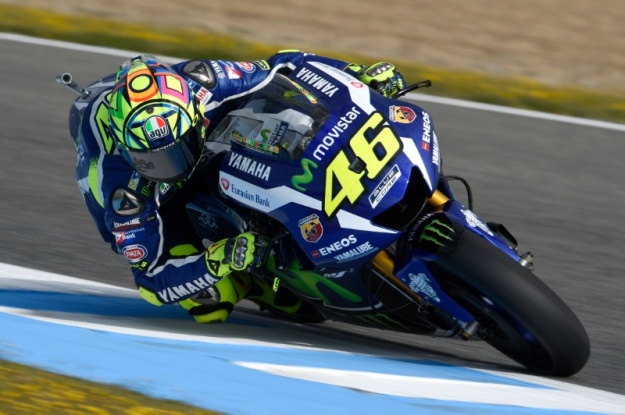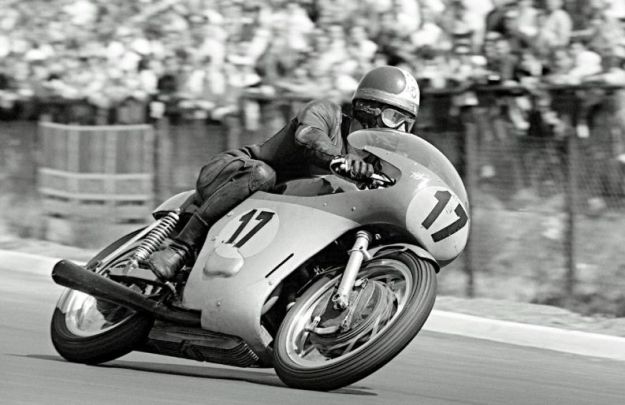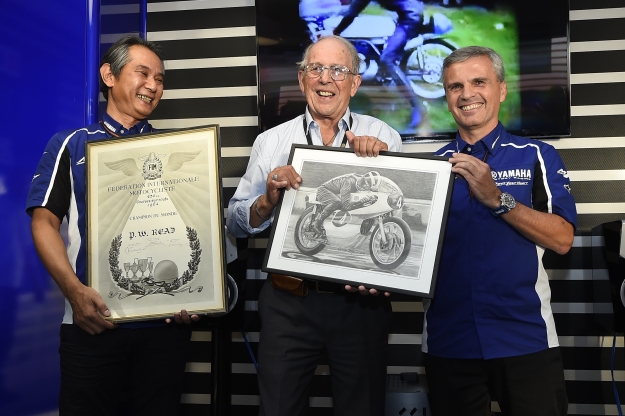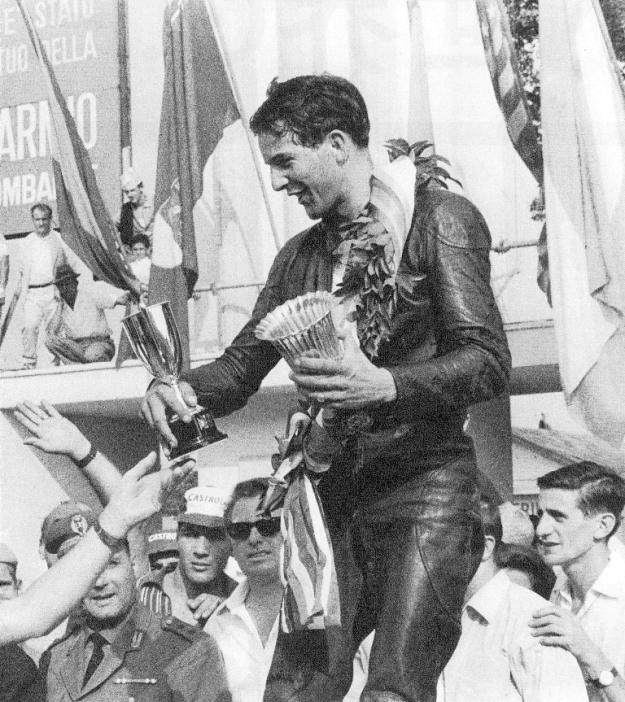The recent return to form by Valentino Rossi since re-joining his former team at Yamaha has been quite extraordinary. After two seasons in the wilderness with Ducati (2012-2013) and a change of crew chief from Jeremy Burgess to fellow Italian Silvan Galbusera, Rossi is back once more to his winning ways. A single win and four third-place podiums helped Valentino clinch fourth place in the 2014 MotoGP World Championship, which by anyone’s standards was a great achievement. The momentum continued into the 2015 season with four wins and Rossi finishing off the podium only three times to take second place in the championship by a mere 5 points, in what became a contentious world title win for Jorge Lorenzo.
What makes Rossi’s performance even more remarkable is his age. Valentino turned 37 years old earlier this year showing his hunger for victory and love of the sport has not waned. Yamaha must think so as they have agreed to a two-year extension of Rossi’s contract keeping him with the factory team until 2018.
Nonetheless, Rossi’s renewed competitiveness has swung the spotlight of public attention once more onto the subject of who is the greatest of all time (G.O.A.T.) in the sport of Grand Prix motorcycle racing.
There are of course the cold facts that statistics tend to present. The great Giacomo Agostini is still the most prolific Grand Prix winner with 122 wins to his credit while Rossi is still chipping away on 114 with the potential to equal or beat this record. Agostini has also won 8 MotoGP (formerly 500cc) world titles to Rossi’s 7 so far. “Ago” has also won 7 350cc world championships giving him a total of 15 world titles to Valentino’s 9 (a 125cc title in 1997 and 250cc title in 1999 with Aprilia). Agostini has also won 10 Isle of Mann TT’s, the only non-British rider to do so. Rossi though has won world titles in three capacity classes to ‘”Ago’s” two.
Detractors of Agostini’s accomplishments like to point out that during his domination of the Grand Prix that he had superior multi-cylinder four-stroke machinery of the MV Agusta factory team at his disposal with mainly outdated British four-stroke singles to contend with. That is to a degree is true but ‘Ago” still had to deal with the likes of Mike Hailwood, Jim Redman and Phil Read as either teammates or factory supported Honda riders along the way as well as the ever-improving Japanese two-strokes that were gaining traction in both the 350cc and 500cc class during his career. And indeed it was Agostini in 1974 that won the first MotoGP (500cc) riders title on a four-cylinder two-stroke; a first also for Yamaha and Japan. Interestingly it was Rossi that won the last two-stroke World Championship and the first for the new 990cc four-strokes with Honda in 2001 and 2002.
Both “Ago” and Valentino have similarly won championships in the premier class with two different manufacturers and are part of an elite group of five that have done so in the sixty-seven-year history of the championship. The others are Geoff Duke, Eddie Lawson and Casey Stoner.
It should also be pointed out that Giacomo’s 122 Grand Prix wins were accrued over thirteen years from 186 starts, while Rossi has been in the Grand Prix for twenty years and accumulated his 114 (as this is written) wins from 341 starts.
Another relevant point is the danger factor. Grand Prix motorcycle racing has always been a hazardous sport, and even this year the paddock grieved another fatality when Luis Salom suffered a fatal crash in free practice for the Moto2 race in Catalunya. But during Agostini’s career in the 1960’s and early 1970’s fatalities were commonplace and many of the circuits were considered deadly. Surprisingly “Ago” was quoted as saying that his favourite tracks were the Isle of Man TT, the old Nurburgring, the old Spa, Opatija and the old Brno circuit, the five most deadly tracks in Grand Prix motorcycle racing history. Remember too, that it was during this period that the “pudding basin” helmet was considered standard “safety equipment”.
Greatness though is not necessarily statistics but perhaps the perception of the groups of fans who love the sport and have lived through different eras. Take Geoff Duke, for example, a six-time World Champion (two 350cc and four 500cc titles) during the sports infancy in the 1950’s, notching up a number of firsts. He was the first man to win two titles (350cc and 500cc) in the same season (1951), the first to win 3 consecutive 500cc titles (1953, 1954 and 1955) and also the first to win MotoGP (500c) titles with two different manufacturers (Norton and Gilera).
And what of John Surtees? Surtees won the premier 500cc Grand Prix crown on four occasions, (1956, 1958, 1959 and 1960) and the 350cc G.P. title on three times (1958, 1959 and 1960) for a total of seven championships on two wheels. Surtees then clinched the Formula One car title at the last race in Mexico in 1964, the only person ever to win the premier class on two wheels and four.
But to many Mike Hailwood remains a true icon of Grand Prix motorcycle racing. Equal to Rossi with 9 world championships in three different classes (three 250cc, two 350cc and four 500cc) during a ten-year career with 76 wins from 152 starts in the late 1950’s and 1960’s that included 14 Isle of Man TT victories. Remarkably after an 11-year break from motorcycle racing, Hailwood returned to the Island and won the F1 TT in 1978 and the Senior TT in 1979.
The list goes on with names like Phil Read. A 7 times world champion in three classes (the 125cc in 1968, the 250cc in 1964, 65, 68 and 1971, and the 500cc 1973 and 1974) he accumulated 52 wins from 152 starts, again during the dangerous days of the 1960’s and 1970’s.
But if dominance was the criteria for being a G.O.A.T., then one needs to look no further than Mick Doohan. During a 10-year career between 1989 and 1999, Doohan won 54 500cc Grand Prix and achieved 95 podiums from 137 starts with five consecutive World Championships (equalled only by Rossi). In 1997 Doohan amassed an astounding 12 wins and 2-second places from 15 races. This has only been surpassed by the youngest rider to win a MotoGP World Championship, Marq Marquez, with 13 wins, but from 18 races, on the way to his second World title in 2014. Add to this the fact that Doohan’s superiority occurred after he had sustained debilitating injuries to his left leg during practice for the Dutch TT at Assen during what should have been a dominant season and a convincing first world title.
So indeed the argument for the greatest of all time will continue between fans and journalists alike, on the Internet, in pubs and at racetracks around the world, revealing the genuine passion we all have for what is the greatest of all motorsports.
Words Geoff Dawes © 2016 Images courtesy http://www.crash.net, http://www.metzeler.com, http://www.theguardian.com.
